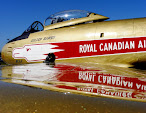US HELICOPTER NAMES
They are also known as the names of First Nation American Tribes. This
is not a coincidence, this was originally due to Army Regulation 70-28,
which has
since been rescinded but the tradition carries on in honor of the American First Nations.
The fact is, despite the 148 years of hostilities, American First
Nations also served with the United States military. General Eli Parker,
the only member of the American First Nation to reach general's rank,
was a personal aide to General Ulysses S. Grant. Most impressively, 25
American First Nation members have received the Medal of Honor for
heroism.
The U.S. Army’s rotorcraft became the H-13 Sioux (Bell
G47), the iconic Korean War aircraft most famous for its appearance in
the television show M*A*S*H*.
The rest is history, Piston-powered
whirlybirds like the Shawnee, Choctaw and Chickasaw also known as the
Sikorsky S55 or Horse, soon followed. In 1959, the Army christened its
first turbine-powered helicopter the UH-1 Iroquois, although aircrews
would universally refer to their beloved ride as the Huey.
In the
1960s, however, the Army broke with tradition when it introduced a
slimmed-down tandem seat gunship version of the Huey it dubbed the
Huey\Cobra and later, simply, Cobra.
Nevertheless, some American
First Nation Leaders were taken aback that the new aircraft wasn’t named
for an American First Nation Tribe. Indeed, though Army officials broke
with tradition to not offend American First Nation Tribes, but the
gesture backfired.
In short order, the Army revived the tradition,
with the AH-56 Cheyenne, OH-58 Kiowa, AH-64 Apache and not one, but two
Blackhawks.
Although not an official U.S. Army policy, Army
officials typically name attack aircraft for American First Nation
Tribes that historians have noted that the American First Nations for
their martial prowess! The RAH-66 Comanche, for instance, honored an
American First Nation Tribe of mounted warriors that out-maneuvered,
out-rode and out-fought the best-equipped U.S. Cavalry a feat even more
impressive when one considers the Comanche first encountered the horse
only in the late 17th century.
So what evidence do we have to
suggest that American First Nations aren’t offended by the Army’s
tradition? Take, for instance, the fact that Army Material Command gets
approval from American First Nation Tribes before naming its aircraft.
That’s according to the Department of the Army’s Pamphlet 70-3,
paragraph 1-11-4-g, for you detail sadists out there.
Still not
convinced? Well, consider that some American First Nation Tribes don’t
just approve of the Army’s naming convention, they give their outright
blessing literally.
In 2012, American First Nation Leaders were on
hand to bless two brands new LUH-72 Lakota helicopters named for the
nation which handed the Army one of its most notorious defeats at the
Battle of the Little Bighorn (Battle Of The Greasy Grass), in 1876.
The two helicopters christened “Eagle” and “Turtle” for prominent Native
American symbols, carry honor feathers in their cockpits, gifts from
the tribe to the North Dakota National Guard.
The Army’s naming convention carries on with the UH-60 Blackhawk and the LUH-72 Lakota.
https://youtu.be/O4irXQhgMqg
Posted by Richard Abbenbroek
Subscribe to:
Post Comments (Atom)





No comments:
Post a Comment